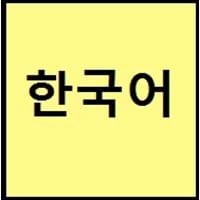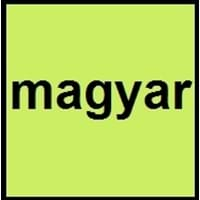Countries
China, Jilin Province, North Korea, South Korea, Yanbian
European Union, Hungary, Serbia, Vojvodina, Serbia
National Language
North Korea, South Korea
Austria, Gambia, Hungary, Romania, Serbia, Slovakia, Slovenia, Ukraine
Second Language
Not spoken in any of the countries
United States of America
Speaking Continents
Asia
Africa, Europe
Minority Language
Japan, People's Republic of China, Russia, United States of America
Austria, Croatia, Romania, Slovakia, Slovenia, Ukraine
Regulated By
The National Institute of the Korean Language
known, Research Institute for Linguistics of the Hungarian Academy of Sciences (Magyar Tudományos Akadémia Nyelvtudományi Intézete)
Interesting Facts
- Korean has borrowed words from English and Chinese.
- Korean has two counting systems. First, is based on Chinese characters and numbers are similar to Chinese numbers, and second counting system is from words unique to Korea.
- Hungarian language has only preserved most of its ancient elements.
- 'Magyar' is the Hungarian name for the language, the 'Magyar' is also used as an English word to refer to Hungarian people.
Similar To
Chinese and Japanese languages
Mansi and Khanty Languages
Derived From
Not Available
East and South Slavic Languages
Alphabets in
Korean-Alphabets.jpg#200
Hungarian-alphabets.jpg#200
Writing Direction
Left-To-Right, Horizontal, Top-To-Bottom
Left-To-Right, Horizontal
Hello
안녕하세요. (annyeonghaseyo.)
szia
Thank You
감사합니다 (gamsahabnida)
köszönöm
How Are You?
어떻게 지내세요? (eotteohge jinaeseyo?)
Hogy vagy?
Good Night
안녕히 주무세요 (annyeonghi jumuseyo)
Jó Éjszakát
Good Evening
안녕하세요 (annyeonghaseyo.)
jó Estét
Good Afternoon
안녕하십니까 (annyeong hashimnikka)
Jó Napot Kívánok
Good Morning
안녕히 주무셨어요 (An-yŏng-hi ju-mu-shŏ-ssŏ-yo)
jó Reggelt
Please
하십시오 (hasibsio)
Kérlek
Sorry
죄송합니다 (joesonghabnida)
bocsi
Bye
안녕 (annyeong)
viszlát
I Love You
당신을 사랑합니다 (dangsin-eul salanghabnida)
Szeretlek
Excuse Me
실례합니다 (sillyehabnida)
elnézést
Where They Speak
South Korea
Bacău County, Rumania
How Many People Speak
Not Available
Dialect 2
Gyeongsang
Oberwart
Where They Speak
South Korea
Austria
How Many People Speak
Not Available
Dialect 3
Hamgyŏng
Székely
Where They Speak
China, North Korea
Székely Land
Second Language Speakers
Not Available
Native Name
한국어 (조선말)
magyar / magyar nyelv
Alternative Names
Hanguk Mal, Hanguk Uh
Magyar
French Name
coréen
hongrois
German Name
Koreanisch
Ungarisch
Pronunciation
Not Available
[ˈmɒɟɒr]
Ethnicity
Koreans
Hungarians
Origin
Before 1st century
1192 AD
Language Family
Koreanic Family
Uralic Family
Subgroup
Not Available
Finno-Ugric
Branch
Not Available
Ugric
Early Forms
Old Korean, Middle Korean and Korean
Old Hungarian
Standard Forms
Pluricentric Standard Korean, South Korean standard and North Korean standard
Modern Hungarian
Signed Forms
Korean Sign Language
Not Available
Scope
Individual
Individual
ISO 639 6
Not Available
Not Available
Glottocode
kore1280
hung1274
Language Type
Living
Living
Language Linguistic Typology
Subject-Object-Verb
Subject-Object-Verb
Language Morphological Typology
Agglutinative
Agglutinative, Synthetic
All Korean and Hungarian Dialects
Most languages have dialects where each dialect differ from other dialect with respect to grammar and vocabulary. Here you will get to know all Korean and Hungarian dialects. Various dialects of Korean and Hungarian language differ in their pronunciations and words. Dialects of Korean are spoken in different Korean Speaking Countries whereas Hungarian Dialects are spoken in different Hungarian speaking countries. Also the number of people speaking Korean vs Hungarian Dialects varies from few thousands to many millions. Some of the Korean dialects include: Jeju, Gyeongsang. Hungarian dialects include: Csángó , Oberwart. Also learn about dialects in South American Languages and North American Languages.
Korean and Hungarian Speaking population
Korean and Hungarian speaking population is one of the factors based on which Korean and Hungarian languages can be compared. The total count of Korean and Hungarian Speaking population in percentage is also given. The percentage of people speaking Korean language is 1.14 % whereas the percentage of people speaking Hungarian language is 0.19 %. When we compare the speaking population of any two languages we get to know which of two languages is more popular. Find more details about how many people speak Korean and Hungarian on Korean vs Hungarian where you will get native speakers, speaking population in percentage and native names.
Korean and Hungarian Language Codes
Korean and Hungarian language codes are used in those applications where using language names are tedious. Korean and Hungarian Language Codes include all the international language codes, glottocodes and linguasphere.





